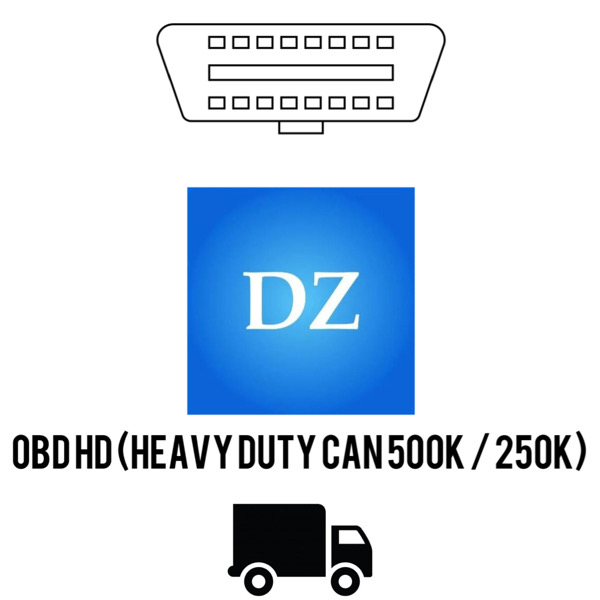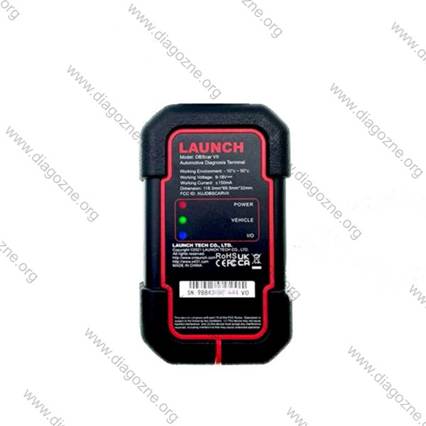OBD HD (Heavy Duty CAN 500k / 250k): Heavy-Duty Vehicle Diagnostics

OBD HD uses the CAN (Controller Area Network) protocol adapted for heavy-duty vehicles and commercial equipment. The standard supports data rates of 250 kb/s and 500 kb/s, enabling fast and reliable diagnostics of various Electronic Control Units (ECUs) in trucks, buses, and construction machinery.
How OBD HD Works
OBD HD utilizes a multi-master CAN bus for communication between vehicle modules. Each ECU can send and receive messages using unique identifiers, ensuring accurate addressing and message prioritization. This protocol allows monitoring and diagnostics of key systems, including the engine, transmission, brakes, and safety modules.
Launch OBD-II adapters that support the protocol:
DBScar IV, DBScar V, DBScar VII
ThinkDiag devices that support the protocol:
ThinkDiag 2
Ediag devices that support the protocol:
Ediag Plus, Ediag Elite

Vehicle types and brands supported by the protocol:
Heavy-duty commercial vehicles and buses, including Volvo Trucks, Scania, MAN, Mercedes-Benz Trucks, DAF, Freightliner, Peterbilt, Kenworth, Mack, as well as construction and agricultural machinery.
The protocol is used for diagnostics and communication between ECU modules in HD (Heavy Duty) vehicles via a CAN network at 250 kbit/s or 500 kbit/s.
Advantages of the OBD HD Protocol
- Fast and reliable communication between multiple ECU modules
- Supports real-time diagnostics and system monitoring
- Standardized for widespread use in heavy-duty vehicles
- Flexible regarding transmission speeds (250 kb/s and 500 kb/s)
- Enables efficient maintenance and servicing of large fleets
Disadvantages and Limitations
- Requires specialized diagnostic tools for OBD HD
- More complex configuration compared to classic OBD-II protocols
- Limited to heavy-duty and commercial vehicles
- Not compatible with older serial protocols without an adapter
Applications of OBD HD
OBD HD is used for reading and clearing DTC codes, monitoring sensor data, testing ECU modules, and overseeing safety systems. Its speed and reliability make it the standard for diagnostics and maintenance of modern heavy-duty vehicles and machinery.
Conclusion
OBD HD (Heavy Duty CAN 500k / 250k) is a key protocol for professional heavy-vehicle diagnostics. It provides fast, reliable, and detailed control of ECU modules, facilitating maintenance, servicing, and optimization of commercial equipment performance.

